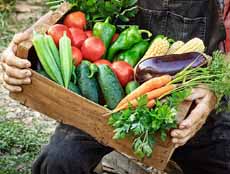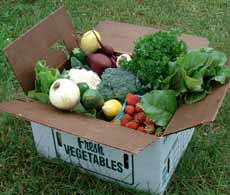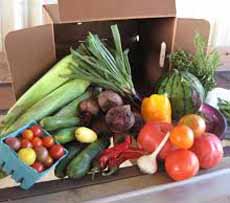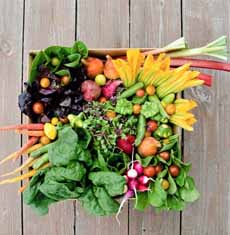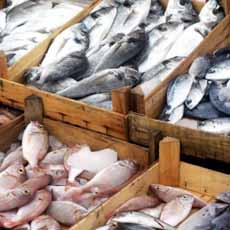TIP OF THE DAY: Find A CSA & A CSF
|
National Farmers Day is October 12th, and National CSA Day, a floating holiday, is the last Friday in February. CSAs deserve as much attention as they can get, so today’s tip is help yourself, help a small family farmer: Head to the CSA DAY website and find a CSA near you. You can also check on LocalHarvest.org. If you currently browse farmers’ markets for the best local produce, the next step is to join a CSA and have the farmers’ market come to you (not literally). WHAT’S A CSA CSA stands for community-supported agriculture, which is a direct-to-customer business model for farmers. The concept originated in Europe and Asia in the 1980s as an alternative financing arrangement, to help sustain small-scale farmers. It was first adopted in the USA by some biodynamic farmers in Massachusetts, in the mid-1980s. They coined the term CSA. The concept spread, and more and more food enthusiasts became excited to have the freshest produce while supporting local small farmers. In a CSA, farmers and consumers bypass commercial supply lines (middlemen, warehouse storage) and deal directly with each other. In a CSA, the consumer buys a share of a farm’s output in the form of a weekly (or biweekly) box filled with freshly harvested produce. In the traditional CSA model, participants pay for a season’s worth of produce (called a membership or a subscription), in advance. The CSA member then receives a box of fruits and vegetables every week throughout the harvesting season. This model helps stabilize the farm’s income. It’s a boon for small family farms, which get ash in hand to run the farm when they most need it (in advance having something to harvest and sell). The farmer commits to giving the best to a committed set of customers. In return, members receive a weekly box of locally-grown produce. The contents differ each week and members never know what they’ll get, but seasonal harvests root vegetables in the fall, tomatoes, and berries in the summer, etc. Some people join a CSA for the freshest fruits and vegetables, to support local farmers, and to know where their food comes from. Each farmer selects his/her own model, but in general: There are also CSFs—community-supported fisheries—that use the CSA model to support their small, local fisheries. Use this locator to find one near you. Members support sustainable, transparent supply chains of ethically sourced or captured fish. |
|
|
|
As with CSAs, you get the most local, most fresh products: “from dock to dish,” as the motto goes. Here’s more about CSFs. You become part of a community with reverence for the land. CHECK OUT WHAT’S HAPPENING ON OUR HOME PAGE, THENIBBLE.COM.
|
||
